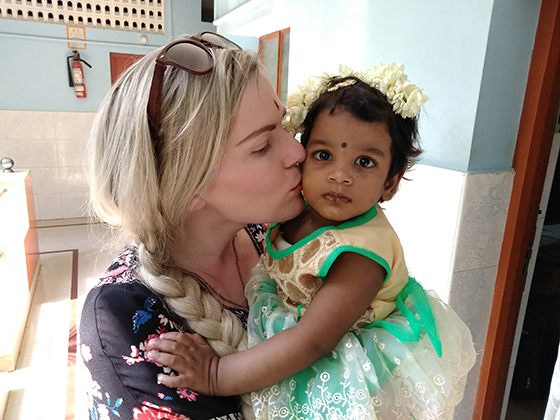How to Adopt a Child
Thinking about starting the process?
We’re here to help!
Before diving into this guide, please understand that there is no simple, cookie-cutter adoption. Every adoption is unique, and much could be written about each step of the journey. This guide provides a high-level overview of the most traditional route.
With every step, we recommend much prayer, research, and discussion.
How to Adopt in 10 Steps
.
-
-
Choose between domestic or international adoption.
One of the first decisions you’ll need to make is whether to adopt in or out of country. Many factors—including age, finances, timeline, etc.—play a role in this decision. Not sure which direction to go? We recommend using Loving Shepherd Ministry’s free Adoption Assessment Form, which will ask you a variety of questions and help you narrow down your options. LSM has helped families navigate 7,300 adoptions and can help guide yours.
Learn more: Domestic, International, or Foster-to-Adopt?
. -
Select an adoption agency.
Choosing a good adoption agency is one of the most critical pieces of the adoption journey. Your agency will walk with you through your entire process (and in some cases follow up with you for years after your adoption is complete!) So it is important that you choose well. Here’s how to choose an agency in 4 clear steps.
Note: If you are adopting internationally, it is required by law that your adoption agency be Hague-compliant. Pronounced Haag. (Hague exists as an international agreement to protect children with international standards of practice for inter-country adoptions.)
. -
Get a homestudy.
The adoption agency you choose will guide you through this process. You’ll work with a state-licensed social worker to complete paperwork, background checks, interviews, and a home inspection—eventually resulting in a 6- to 15-page written document (created by your social worker) that approves you to adopt.
Do not be overwhelmed by the home study. It exists for two basic reasons—1) to prove you are able to parent, and 2) to prove you have a safe place to raise a child.
Learn more: What Is a Home Study?
. -
Wait. (And wait. And wait.)
Once your home study is complete and you’re added to the list of approved families, you will spend time waiting. This wait can be difficult—primarily because there is no way to know how long it will last. In rare cases, some families get a phone call within days of completing their home study, while others wait for years.
This is a great time to begin fundraising! Upon completing your home study, you’re eligible to apply for adoption funding. Apply for Lifesong financial support here!
We also encourage you to use this time to research and prepare. Learn all you can about adoption, about parenting, and about your child’s country of origin (if you are adopting internationally). Here are some resources to consider while you wait.
. -
Receive a match.
At some point in the process, Lord-willing, you’ll learn from your adoption agency that you have been matched with a waiting child (or with a child who will soon be born). At this point, you’ll be given all the available details about the child—including age, healthy history, and details surrounding the child’s birth. Most often, families are given a time period in which to read and consider the child’s file. If the child has already been born, families are often encouraged to take the child’s health file to a medical professional for evaluation and discussion.
Bottom line: You want to know with confidence that you can meet the needs of the child.
.
“We will never forget the moment our eyes met at the orphanage. All the waiting, hours of fundraising, landslides of paperwork, had come down to this precious pause in time. Our hearts resounded ‘worth the wait’ with every beat and continue to do so with each passing day with our new little one.” —Erica, Lifesong adoption matching grant recipient
.. -
Make travel plans.
Once you agree to a match, you’ll make travel arrangements—whether you travel to meet a birth mom, travel for the birth of a child, or travel to meet your child. Often, the time between being matched and traveling is quick, so it’s a good idea to have plans and finances ready for the day you get a call.
Match and travel can be a wonderful (crazy!) whirlwind of activity and emotion.
. -
Meet your son or daughter.
“Placement date” is considered the day your child comes to live in your family. Many families call this “Gotcha Day!” and will celebrate it for years to come.
. -
Bond with your child.
Whether you meet your child at your home, out of state, or out of country, this time is crucial for bonding and celebrating the addition to your family.
. -
Finalize your adoption.
Though you are home with your child, your adoption agency will continue to work with you for post-adoption placement follow-ups and country- or state-required post-placement reports. You will file additional paperwork (as necessary) for a formal adoption petition or for immigration as necessary.
. -
Live as a family.
Though this is the final step of the adoption process, it is not the end. You’ll spend a lifetime learning about adoption and the child God has placed in your family. You’ll have good days and bad days—just like you would with any child you raise. And you’ll learn new things about your child and yourself.
-
Finally, our recommendation is to find a group—ideally in your church, family, or community—with whom you can continue to walk the adoption journey after your child is home.
ARE ADOPTION FINANCES STANDING IN YOUR WAY?
We’ve helped over 9,000 children come home through matching grants, interest-free loans, and fundraising tools.